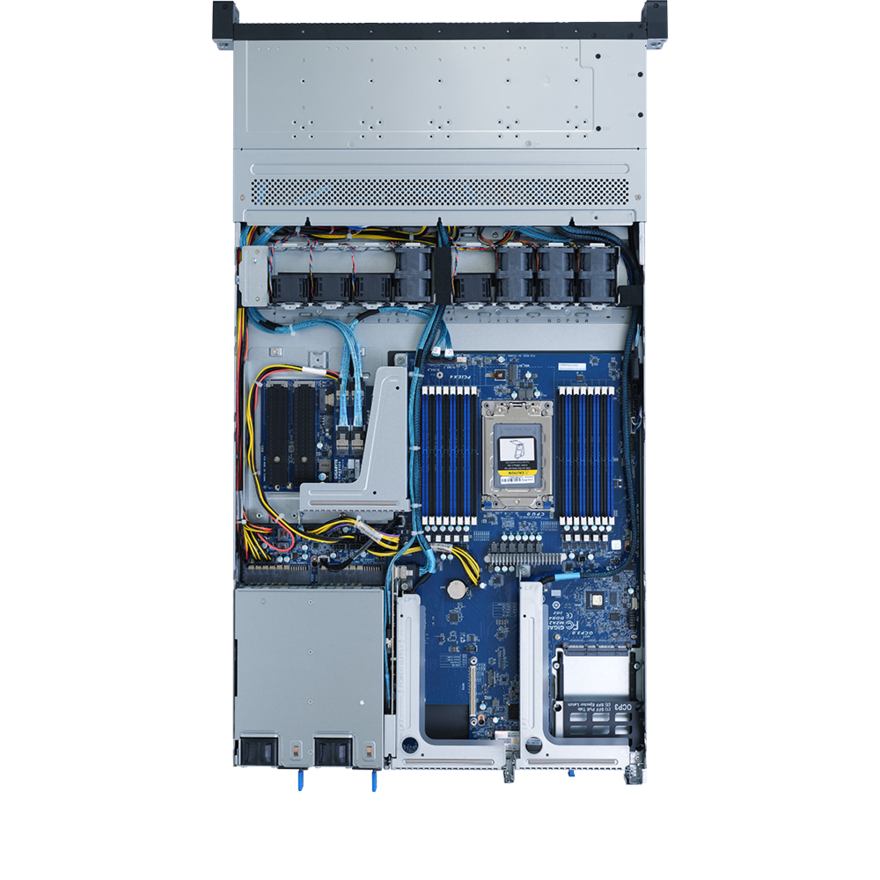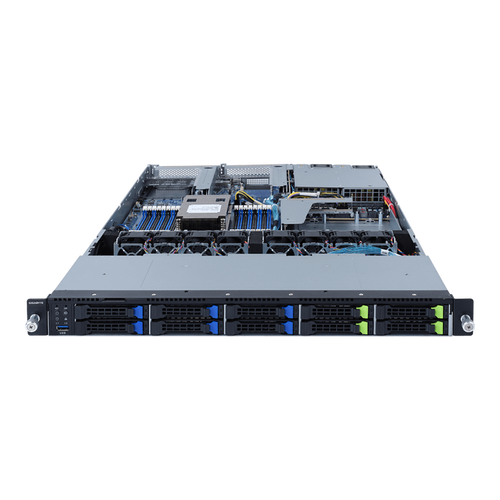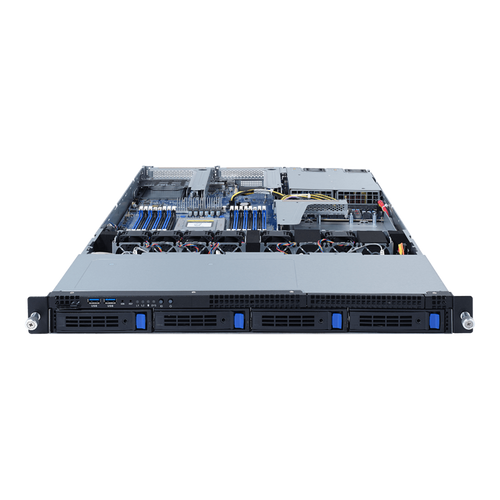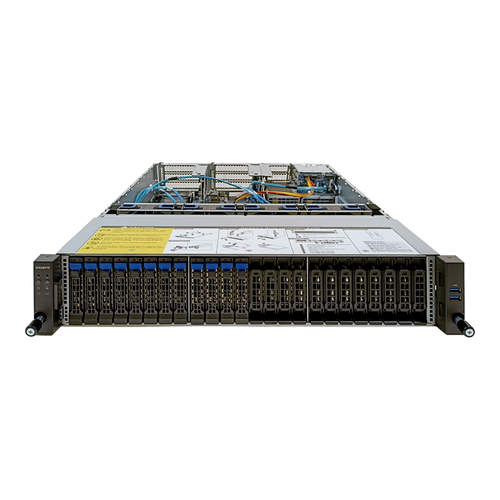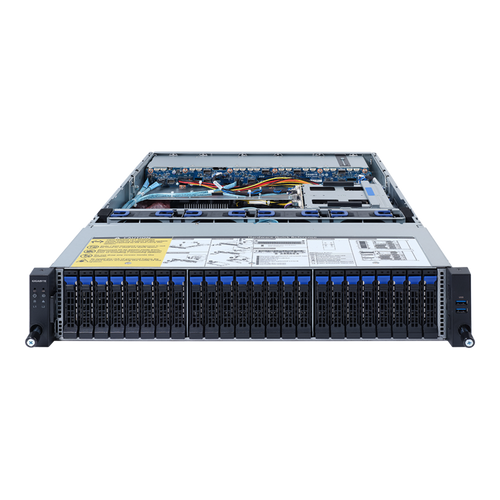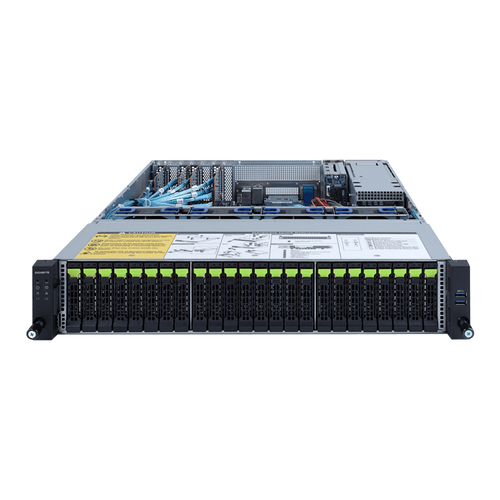Product Description
Gigabyte R162-ZA2 (rev. A00) Rack Server - AMD EPYC 7003 - 1U UP 12-Bay Gen4 NVMe
- Hardware-level root of trust support
- AMD EPYC 7003 Series processors
- Single processor, 7nm technology
- 8-Channel RDIMM/LRDIMM DDR4, 16 x DIMMs
- 2 x 1Gb/s LAN ports (Intel I350-AM2)
- 1 x Dedicated management port
- 12 x 2.5" Gen4 NVMe hot-swappable bays
- 1 x M.2 slot with PCIe Gen4 x4 interface
- 2 x M.2 slots with PCIe Gen3 x4 interface
- 2 x FHHL PCIe Gen4 x16 and x8 slots
- 1 x Internal FHHL PCIe Gen4 x16 slot
- 1 x OCP 3.0 Gen4 x16 slot
- 1 x OCP 2.0 Gen3 x8 mezzanine slot
- 1+1 800W 80 PLUS Platinum redundant power supplies
Architecture for Modern Data Centers
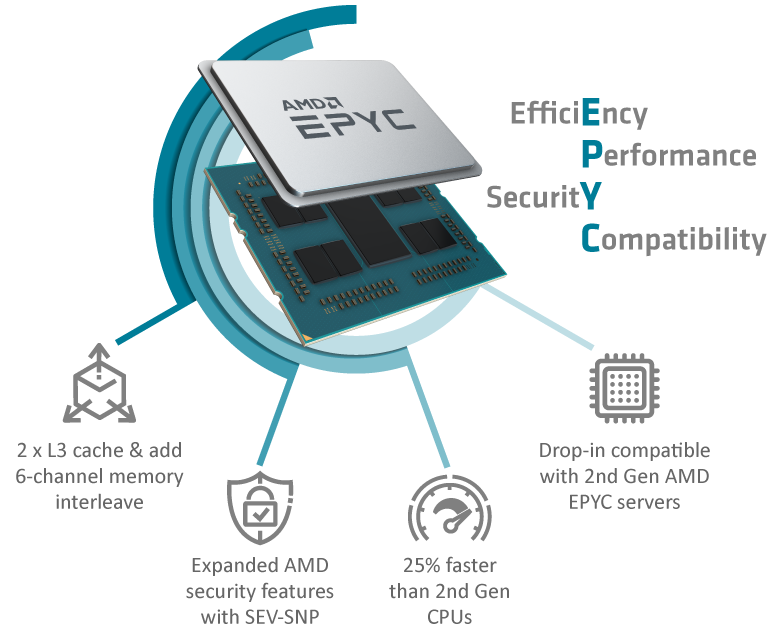
AMD EPYC™ 7003 Series Processors
GIGABYTE servers and AMD EPYC 7003 Series Processors deliver the highest possible I/O throughput to pave the way for fast communication between CPU and accelerator in HPC and data analytics.
- Up to 64 Cores
- 8 Channels of DDR4-3200
- Up to 4TB Memory Capacity
- 128 lanes PCIe 4.0
- 2-way SMT & Turbo Boost
- 4,6,8-channel Memory Interleave
- Synchronized Fabric and Memory Clock Speeds
- Secure Memory Encryption
- Secure Encrypted Virtualization
R162-ZA2 Product Overview
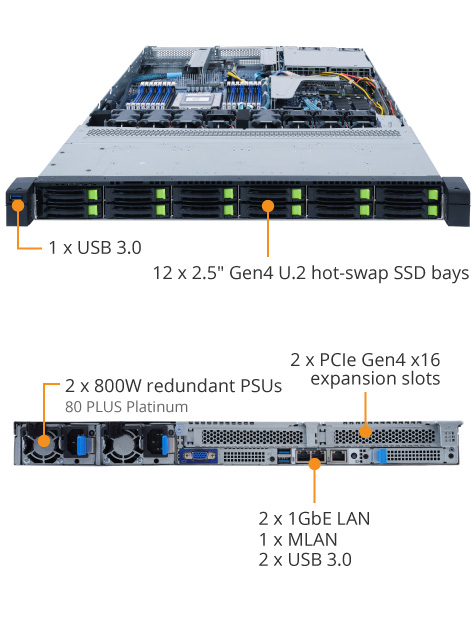
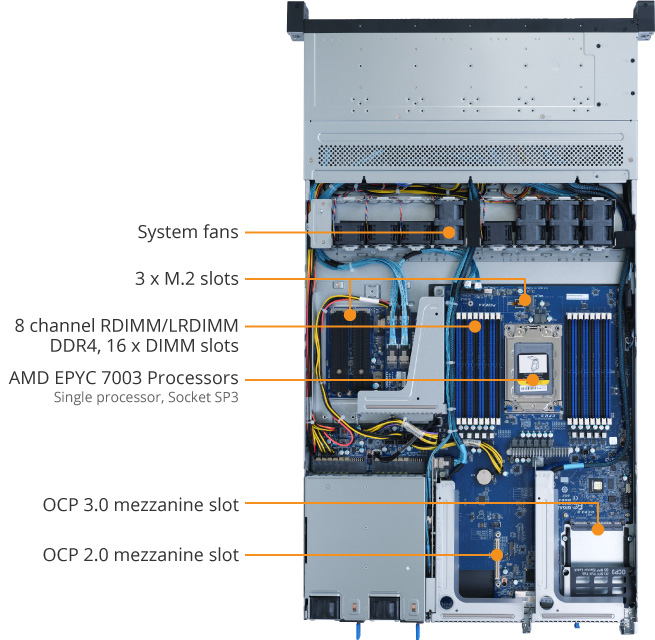
R162-ZA2 Block Diagram
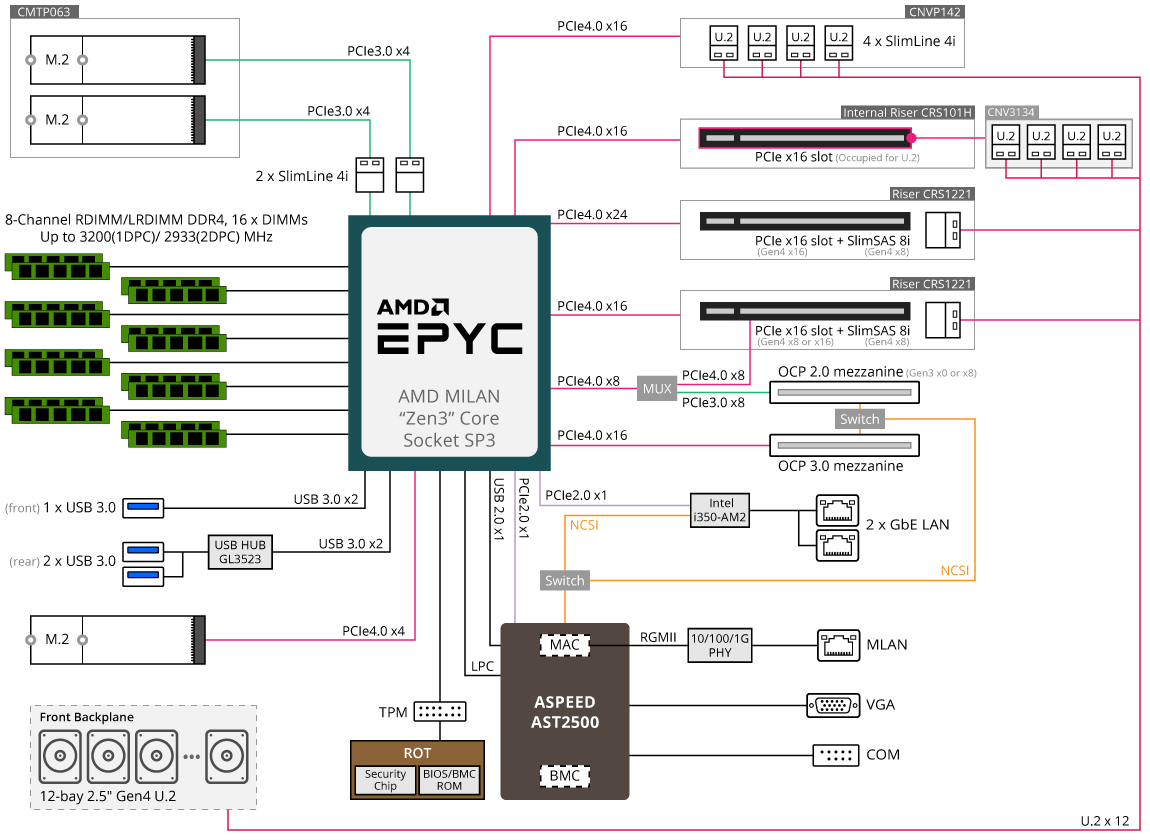
Max Memory Speed Even at 2 DPC
With GIGABYTE unique solution, maximum memory speed is now supported, even when using 2 DIMMS per channel*. GIGABYTE’s server platforms give you the performance edge, with more memory capacity at faster speeds.
* Enabled via BIOS setting (“UMC Common Options” “DDR4 Common Options” Configure “Enforce POR” setting). Please follow product QVL. Please consult your GIGABYTE sales or technical representative for more information.
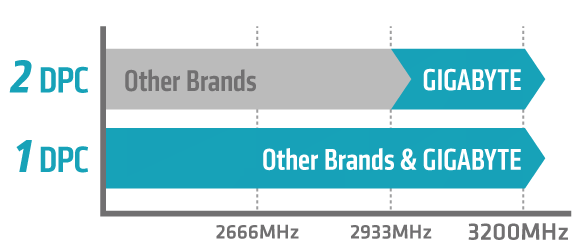
OCP 3.0 Ready
GIGABYTE’s G-,H-,R- * series offer servers that feature an onboard OCP 3.0 slot for the next generation of PCIe 4.0 add on cards. Advantages of this new type include:
- Easier Serviceability: simply slot in / pull out the card without needing to open the server chassis; tool less design
- Larger Thermal Envelope: more space for heat sink provides an increased power budget for new & emerging capabilities
* Available on select servers.
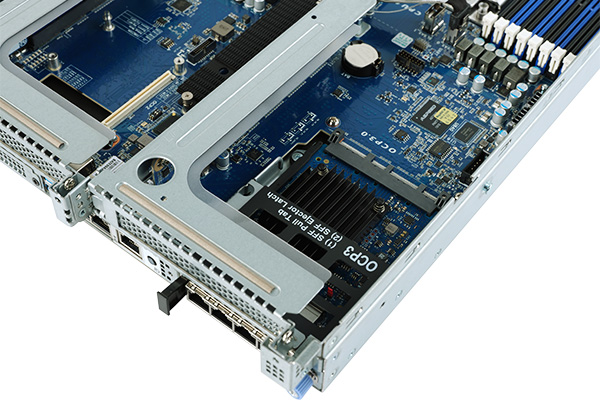
Hardware Security
Hardware-level Root of Trust *
Protection is built in the silicon to ensure systems will not be vulnerable to security attacks or cyber threats. This hardware-level root of trust (ROT) helps isolate the system as the boot process starts to make sure a verified code is used.
Provides:
- Integrity of cryptographic keys and secure key generation
- Boot process protected and verified
- Secure application environment and protection at runtime
* Available on select models
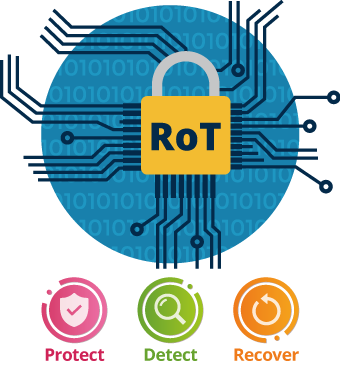
Optional TPM 2.0 Module
For hardware-based authentication, the passwords, encryption keys, and digital certificates are stored in a TPM module to prevent unwanted users from gaining access to your data. GIGABYTE TPM modules come in either a Serial Peripheral Interface (SPI) or low pin count (LPC) interface.

Power Efficiency
Automatic Fan Speed Control
GIGABYTE servers are enabled with Automatic Fan Speed Control to achieve the best cooling and power efficiency. Individual fan speeds will be automatically adjusted according to temperature sensors strategically placed in the servers.
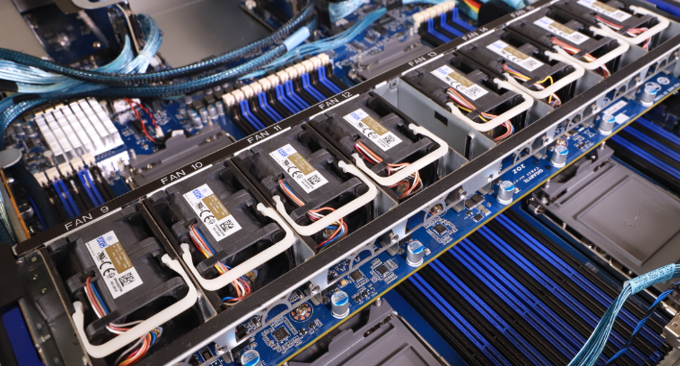
Cold Redundancy
To take advantage of the fact that a PSU will run at greater power efficiency with a higher load, GIGABYTE has introduced a power management feature called Cold Redundancy for servers with N+1 power supplies. When the total system load falls lower than 40%, the system will automatically place one PSU into standby mode, resulting in a 10% improvement in efficiency.
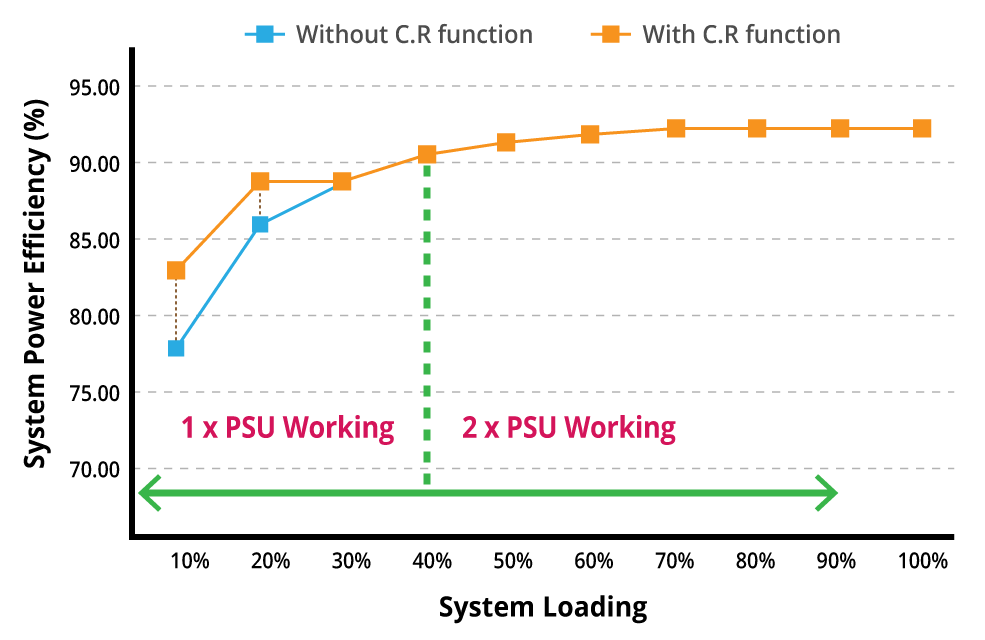
High Availability
Smart Crises Management and Protection (SCMP)
SCMP is a GIGABYTE patented feature which is deployed in servers with non-fully redundant PSU design. With SCMP, in the event of faulty PSU or overheated system, the system will force the CPU into an ultra-low power mode that reduces the power load, which prevents the system from unexpected shutdown and avoids component damage or data loss.
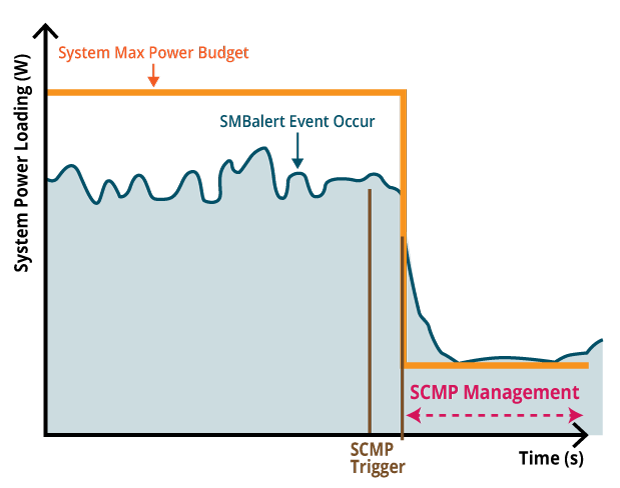
Dual ROM Architecture
If the ROM that stores the BMC and BIOS fails to boot, the system will reboot with the backup BMC and/or BIOS replacing the primary. Once the primary BMC is updated, the ROM of the backup BMC will automatically update the backup through synchronization. For the BIOS, it can be updated based on user's choice of firmware version.

Value-added Management
GIGABYTE offers free-of-charge management applications via a specialized small processor built on the server.
GIGABYTE Management Console
For management and maintenance of a server or a small cluster, users can use the GIGABYTE Management Console, which is pre-installed on each server. Once the servers are running, IT staff can perform real-time health monitoring and management on each server through the browser-based graphical user interface. In addition, the GIGABYTE Management Console also provides:
- Support for standard IPMI specifications that allows users to integrate services into a single platform through an open interface
- Automatic event recording, which can record system behavior 30 seconds before an event occurs, making it easier to determine subsequent actions
- Integrate SAS/SATA/NVMe devices and RAID controller firmware into GIGABYTE Management Console to monitor and control Broadcom® MegaRAID adapters.
GIGABYTE Server Management (GSM)
GSM is a software suite that can manage clusters of servers simultaneously over the internet. GSM can be run on all GIGABYTE servers and has support for Windows and Linux. GSM can be downloaded from GIGABYTE website and complies with IPMI and Redfish standards. GSM includes a complete range of system management functions that includes the following utilities:
- GSM Server: A software program that provides real-time, remote control using a graphical user interface through an administrator’s computer or through a server in the cluster. The software allows ease of maintenance for large clusters of servers.
- GSM CLI: A command-line interface for monitoring and managing remotely.
- GSM Agent: A software program installed on each GIGABYTE server node that retrieves information from each system and devices through the OS, and this software integrates with GSM Server or GSM CLI.
- GSM Mobile: A mobile app for both Android and iOS that provides admins with real-time system information.
- GSM Plugin: An application program interface that allows users to use VMware vCenter for real-time monitoring and management of server clusters.
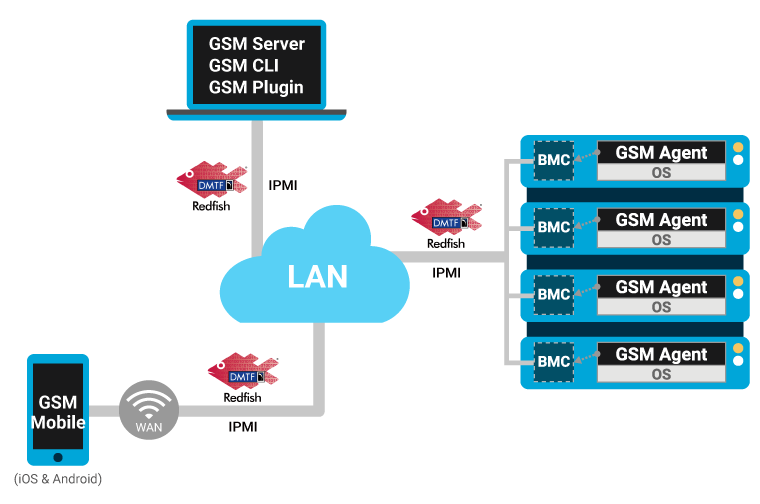
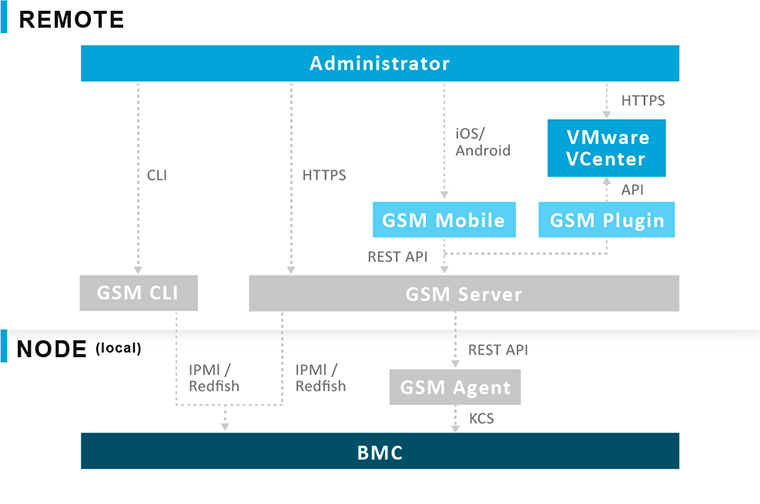
 US Dollars
US Dollars
 United Arab Emirates Dirham
United Arab Emirates Dirham
 Euro
Euro
 British Pound
British Pound
 Turkish Lira
Turkish Lira
 Canadian Dollar
Canadian Dollar
 South African Rand
South African Rand
 Indian Rupee
Indian Rupee
 Brazilian Real
Brazilian Real
 Indonesian Rupiah
Indonesian Rupiah
 Singapore Dollar
Singapore Dollar
 South Korean Won
South Korean Won
 Japanese Yen
Japanese Yen
 Chinese Yuan
Chinese Yuan
 Mexican Peso
Mexican Peso
 Qatari Rial
Qatari Rial
 Saudi Riyal
Saudi Riyal





